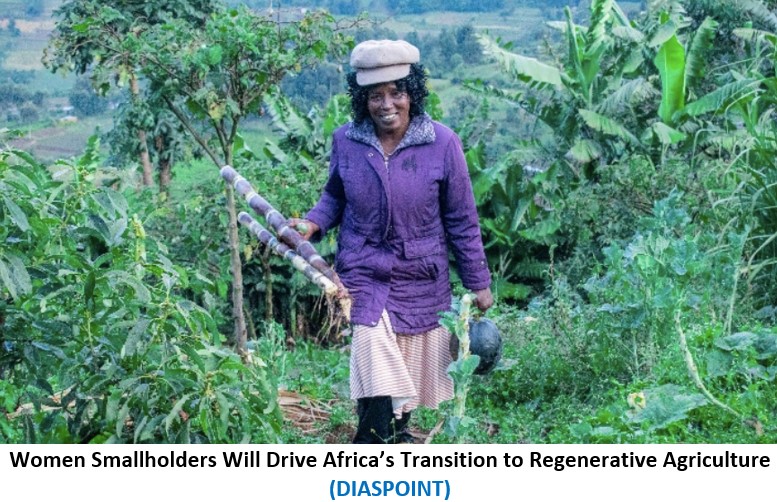Women Smallholders Will Drive Africa’s Transition to Regenerative Agriculture
An estimated 140 million people in Africa are facing acute food insecurity[1], yet, in Kenya alone, 50% of all productive soil is badly degraded. Worse still, because of record droughts, half of Kenyan farmers have harvested nothing in the last four seasons.
Regenerative agriculture techniques offer the world’s poorest farmers a lifeline, restoring soils and boosting yields and incomes – while at the same time sequestering carbon emissions. 80% of Kenyan farmers are women, which is why, to regenerate landscapes at scale, women must drive the change towards regenerative farming.
What do we mean by regenerative agriculture?
More carbon resides in soil than in the atmosphere and all plant life combined (IPPC). Increasingly, businesses are looking at how regenerative agriculture can help them to achieve their carbon reduction goals under SDG13. But what does the term really mean?
‘Regenerative agriculture’ covers a wide spectrum of approaches, but put simply, it’s a method of farming that rebuilds organic soil matter and restores biodiversity – while sequestering dangerous carbon emissions. Farmers plant a range of trees, plants and crops to keep vegetation in the ground, pulling the carbon out of the atmosphere and improving degraded soil. Grazing animals provide natural fertiliser, and farmers avoid soil disturbance (like ploughing) to keep carbon locked underground.
Fighting soil degradation, food insecurity and gender inequality
A report released this month, commissioned by IUCN and the UNFCCC, estimates if just 50% of farmers adopted regenerative agriculture across Africa, by 2040, we’d see a 30% reduction in soil erosion, as well as a 20% increase in soil carbon content.
Smallholder farmers supply sub-Saharan Africa with 80% of its food – so improving their productivity will have a huge impact on food security across the continent. In fact, the same report estimates if 50% of African farmers adopted regenerative agriculture, we’d see a 16% increase in daily per capita calorie intake.
Crucially, regenerative farming also builds gender equity – by providing year-round opportunities for women to earn and control their own incomes through agro-biodiversity.
In monoculture farming a single crop is harvested just once a year. That’s one harvest, and, in most cases, one lump sum controlled solely by the male head of the household. On regenerative farms, however, continuous cropping, fruit trees and livestock integration means there’s always something for women to harvest and sell, or – when times are lean – to eat. The sale of a cow (which also provides crops with fertiliser) can cover a year’s school fees. Mango and papaya trees don’t just prevent soil erosion and preserve moisture in the earth, their fruit can also be sold to neighbours. Pigeon peas or other pulses, planted alongside maize to lock nutrients in the soil, are a valuable source of protein.
Why women must be in the lead







